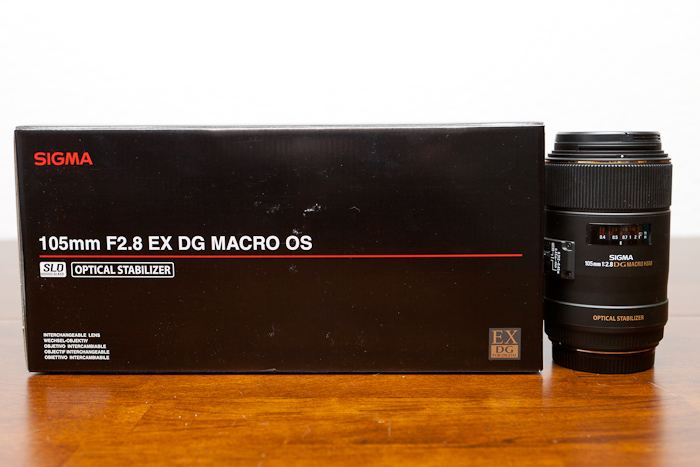
Canon lists six lenses on their site under the macro section and Nikon lists 10, so is it even worth looking into 3rd party companies like Sigma? In the recent past, the popular answer was no, but as time keeps on ticking, the 3rd party companies are really upping their game. Sigma’s new 105mm f/2.8 EX DG OS HSM Macro Lens is one of lenses that hopes to draw people from the “big” companies. Continue on to see how it stacks up.
Design
Performance
- Focal Length: 105mm
- Aperture: Maximum – f/2.8 Minimum – f/22
- Camera Mount Type: Canon EF
- Format Compatibility: 35mm / Full-Frame Digital Sensor DSLR (APS-C Sensor)
- Angle of View: 23.3°
- Minimum Focus Distance: 12.3″ (31.24 cm)
- Maximum Reproduction Ratio: 1:1
- Groups/Elements:11/16
- Diaphragm Blades: 9
- Image Stabilization: Yes
- Autofocus: Yes
- Tripod Collar: No
- Filter Thread: 62mm
- Dimensions (DxL): Approx. 3.1 x 5.0″ (7.87 x 12.70 cm)
- Weight: 25.6 oz (726 g)
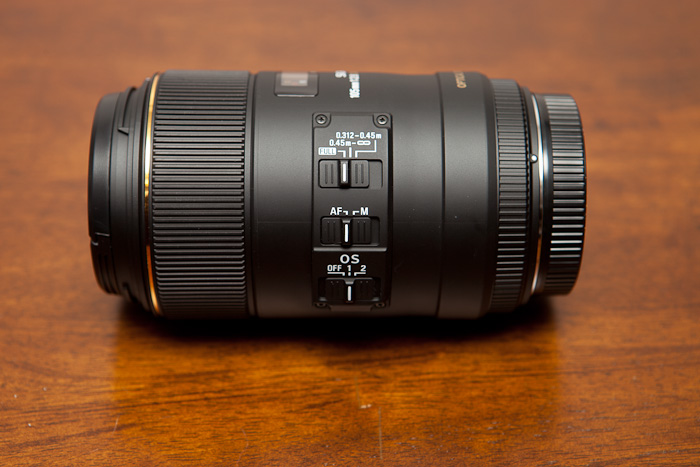
On the barrel of the lens you have your distance meter as well as several switches. Many of the side switches are typical for a macro lens of this caliber. There’s the obvious manual/automatic focus switch which is surrounded by two others; the optical stabilization switch and the focus distance switch.
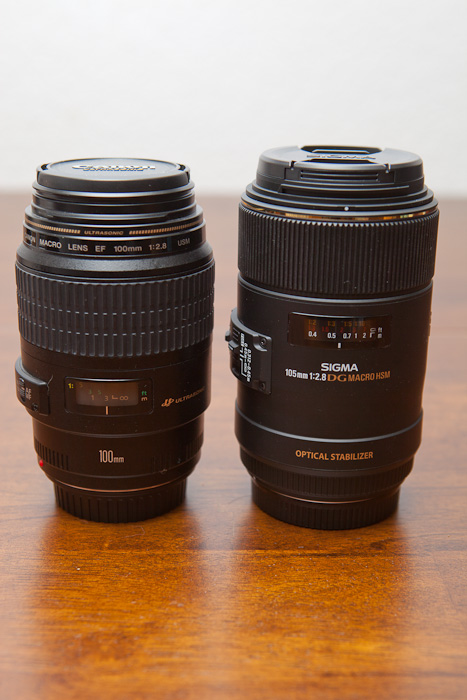
The optical stabilization (this is Sigma’s wording for image stabilization) switch gives you 3 different options. 1, which is for normal use of the lens’ stabilization, 2 which is for use when photographing a moving subject (primarily when panning left and right), and off.
The other switch gives you the option of locking the autofocus from 0.45m to infinity, 0.312m-0.45m, and full, which would be the whole range. The reason to choose one or the other is speed. If you know your subject is further than 0.45m, then choosing that specific autofocus mode will achieve focus faster since it can ignore focus hunting to super macro distances.
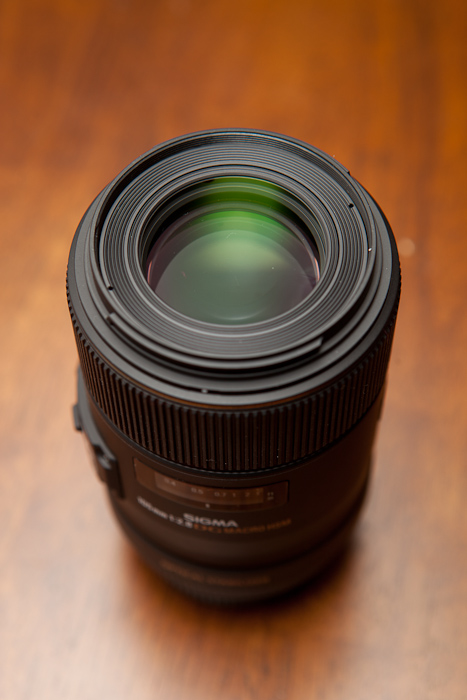
Build quality is rather nice on this lens and the materials also seem to be top notch. The size is also perfect for a macro lens. This lens also features internal focusing so no part of the external lens moves. This can be a much needed feature if photographing insect who are easily startled by the slightest movement.
Lastly, although admittedly a small thing, this lens’ outer barrel coating is much more pleasant than previous Sigma’s that I’ve used. I used to really dislike the powdery, chalky coating on their lenses but they’ve seemed to tone it down on this one.
What’s Included
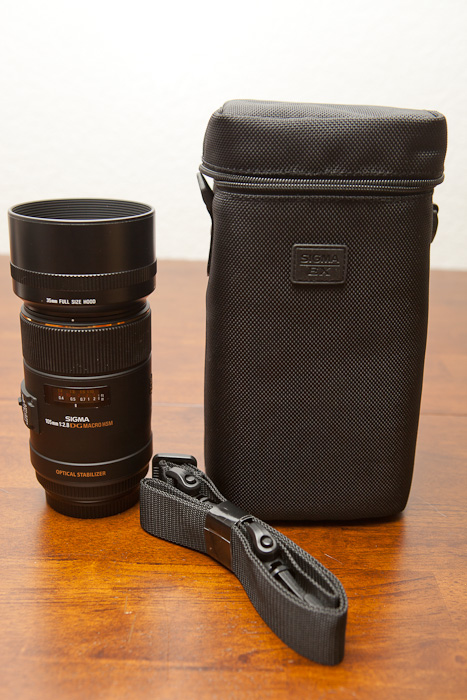
I thought I would throw this little section in because you actually get a couple extra things that you wouldn’t normally get with a lens in this range.
The first goodie is a very nice carrying case with shoulder strap. The case is padded extremely well and will provide ample protection for this (or any) lens.
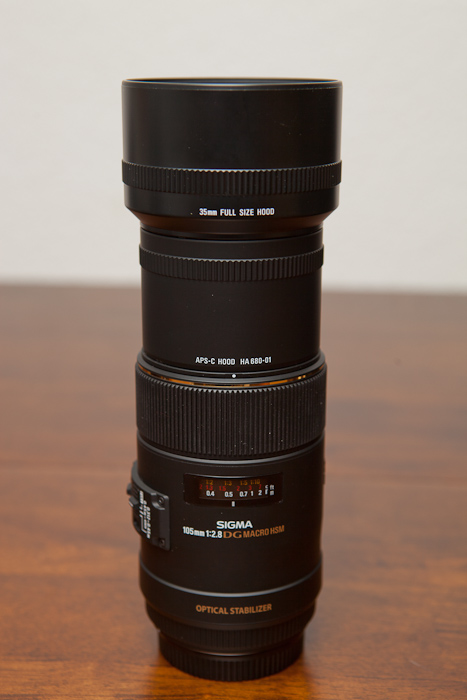
Next, Sigma included a lens hood to prevent unwanted light from striking the lens and decreasing the chance of a lens flare in your image. Sigma didn’t stop there though, and took this one step further. This lens works for both full-frame and cropped sensor cameras. When pairing this lens with a cropped sensor, the effective focal length becomes roughly 170mm. The standard lens hood works perfect for 105mm, but wouldn’t be very effective for 170mm. To counter-balance this, Sigma has included an extension adapter to add to the lens hood.
Use
If you read my hands-on post about this lens from right after I received it, you would know that I was massively impressed with it right away. Now after using it for a more extended time, I can say that my original opinion hasn’t changed at all.
I need to dedicate a section to talk about the optical stabilization of this lens. I was completely blown-away by how slow you can shoot with this lens and still achieve a sharp image. In my testing, I was able to get very usable, crisp images from shutter speeds as low as 1/4 of a second. That’s pretty amazing considering the 105mm focal length.

This is a fantastic ability for a macro lens to have as many times, the subject in front of a macro lens is something very small. When taking images of something very small, quite frequently you don’t have the amount of light you want. Being able to slow that shutter speed down to achieve a better exposure without sacrificing camera shake is priceless.
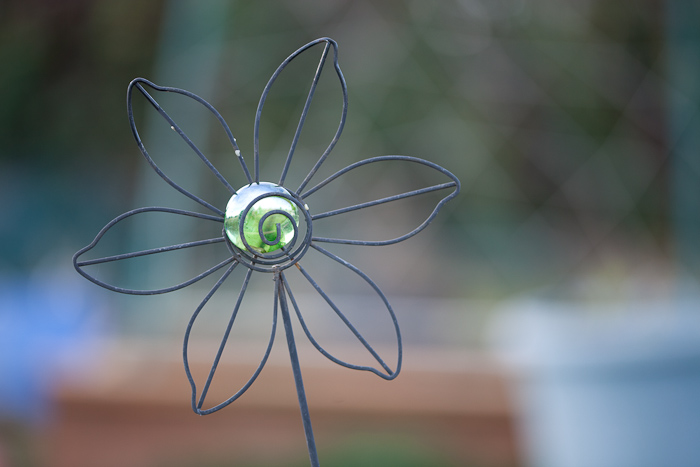
There is one downside worth noting; the noise of the stabilization. My initial assumption was that something was wrong with the mechanism. After questioning it with Sigma, they had me return the lens so they could check it out and send me a new one. Although they eventually said that the original one I sent back had a slight defect, the new one I received was only marginally quieter. See below for a comparison between Sigma’s stabilization noise and Canon’s from my EF70-200mm f/2.8 IS.
Aside from that slight issue, this lens is stellar. Colors are reproduced accurately, the bokeh is smooth and uniform, and achieving focus was quick and accurate. Sigma touts that one of this lens’ 16 glass elements is a Special Low Dispersion (SLD) element. It’s purpose is to reduce chromatic aberration. After pouring over my images and not being able to find any chromatic aberration, I’m now a believer in the advertised qualities of the SLD element.
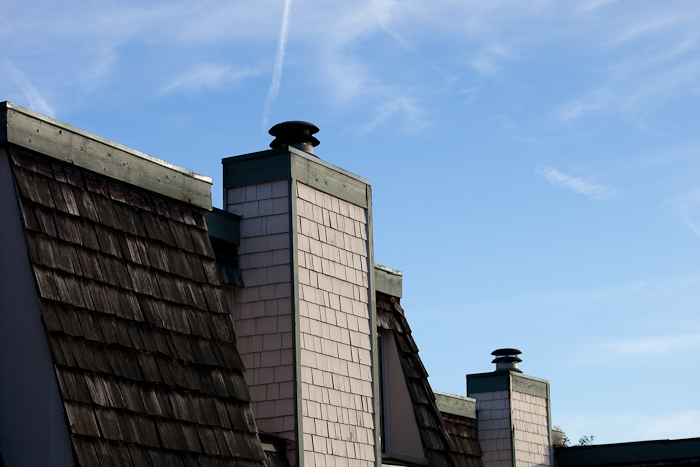
Sharpness is also quite impressive for this lens. As with most lenses, you can see from the below images (click to enlarge), the sharpness is a little soft wide-open at 2.8. However, stopping the lens down brings that sharpness under control throughout the rest of the aperture range.







I did a quick portrait session with, well, myself, to show the portrait abilities of the lens. With the combined focal length, optical stabilization, and sharpness, using this lens for portraiture definitely feasible. As you can clearly see, I’m no model.

Conclusion
I don’t hide the fact that I haven’t been the biggest fan of third party lenses in the past. The Sigma 105mm f/2.8 EX DG OS HSM Macro Lens has me doing some re-evaluating.
Other than the minor stabilization issue I ran into, this lens has thoroughly impressed me. This lens is definitely a worthy macro lens but can easily transition to shooting portraits. When you add up the image quality, stabilization, build quality, and everything you get with it, Sigma has a winner with this one. Even though I’ve owned Canon’s EF 100mm f2.8 macro lens and I’ve used a friend’s Canon EF 100mm f/2.8L IS macro, if I were in the market for a macro lens, my money would be going to Sigma.
If you found this post helpful and would like to be a part of helping them continue, please consider donating through PayPal.
Please Support The Phoblographer
We love to bring you guys the latest and greatest news and gear related stuff. However, we can’t keep doing that unless we have your continued support. If you would like to purchase any of the items mentioned, please do so by clicking our links first and then purchasing the items as we then get a small portion of the sale to help run the website.


